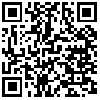SKF: Retained benefits
Time:10 Nov,2016
Novel bearing design approaches provide an effective solution to a number of packaging, assembly, efficiency and performance challenges in modern automotive transmissions, says Sylvain Bussit, Global Business Development Manager Powertrain, SKF.
Automotive transmission bearings must meet many conflicting goals. They are expected to carry high loads, offer a service life in excess of 300,000km, be robust enough to tolerate abusive operation, and stiff enough to minimise NVH issues. At the same time, transmission makers are looking for compact dimensions, low friction to combat CO2 emissions, and for cost-effective and globally available solutions. These demands are encouraging the adoption of some novel approaches to bearing systems design.
In traditional transmission designs, preloaded taper roller bearings are installed at each end of the shaft. This arrangement offers the benefits of high capacity and axial stiffness, but bearing preload must be measured and adjusted during assembly, and proper preload is sensitive to the thermal expansion of components during operation.
An increasingly popular alternative is the locating-nonlocating bearing arrangement, in which a deep groove ball bearing (DGBB) at one end of the shaft handles some radial loads and all the axial loads. Radial loads at the other end are taken by a cylindrical roller bearing. This design is not affected by thermal expansion. It reduces friction too, saving up to 3g of CO2 per km in a typical 6 speed manual transmission. Its downsides are the lower total load capacity of the DGBB and a reduction in axial stiffness.
Axial stiffness can be improved by changing the way bearings are mounted in the transmission. Conventionally, this is done using a combination of snap rings and flanges on the bearing outer ring. This approach has a number of disadvantages. The tolerance necessary to permit easy assembly means the bearing can move in use, with axial forces shifting from the flange to the snap ring as the vehicle goes from drive to coast condition.
That movement can affect the efficiency of gear meshing, reduce shifting accuracy and create NVH issues. This design can also allow the outer ring of the bearing to rotate in the housing, especially as differences in thermal expansion coefficient mean aluminium housings expand more than steel bearings. The conventional approach creates problems in assembly too, since snap rings are awkward and time consuming to install.
A new approach that overcomes many of these limitations is the use of a bearing retainer unit. Usually formed from sheet material, these consist of a plate that holds the outer ring of the bearing at one edge and which includes a number of threaded holes by which it is secured to the transmission housing. During installation, fastening bolts draw the bearing into its cavity in the housing. The resulting interface ensures the outer ring of the bearing cannot rotate, while radial loads are transmitted directly from bearing to housing.
Precise engineering of the material and geometry of the retainer, along with appropriate fastener design, holds the bearing securely in its cavity and prevents movement due to axial loads. The result is a stiffer, quieter, more efficient and longer-lasting transmission.
Bearing retainers have further advantages in the factory. Bearings are delivered pre-installed in retainers, meaning just one component has to be pressed onto each shaft and secured in the normal way. During assembly, the plates rotate feely on their bearings and are positioned using locating features that fix their orientation relative to each other, or to features cast into the transmission housing. Some retainers are designed to hold two bearings, which are pressed onto the gearbox shafts simultaneously, with the gears in a meshed condition. With the retainers precisely located by one of these methods, the securing fasteners can be installed “blind”, from the outside of the housing, a process that is straightforward to automate.
Bearing carrier units are a further development of the retainer approach. In this design, the bearing is secured into a holder on the carrier plate, which may be a sheet metal or cast component depending on load requirements. There is no direct interface between the bearing and the housing, with all loads transmitted through the carrier. Carrier units can be used to secure locating bearings to the transmission housing, or as interim supports for longer shafts. Carrier units provide all the assembly and performance advantages of bearing retainers, while also simplifying housing design and permitting more compact transmission configurations.

 Mobile Site
Mobile Site